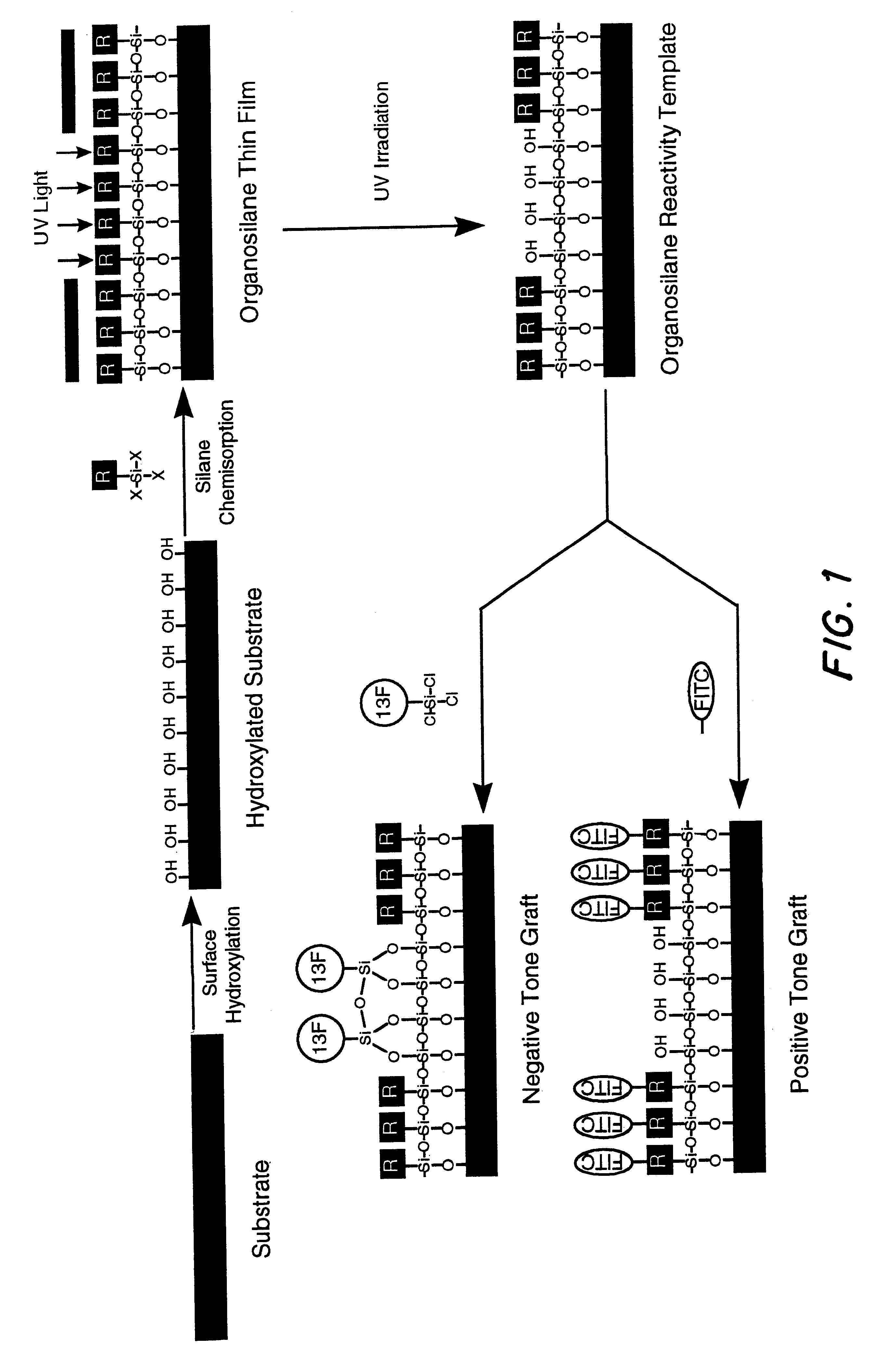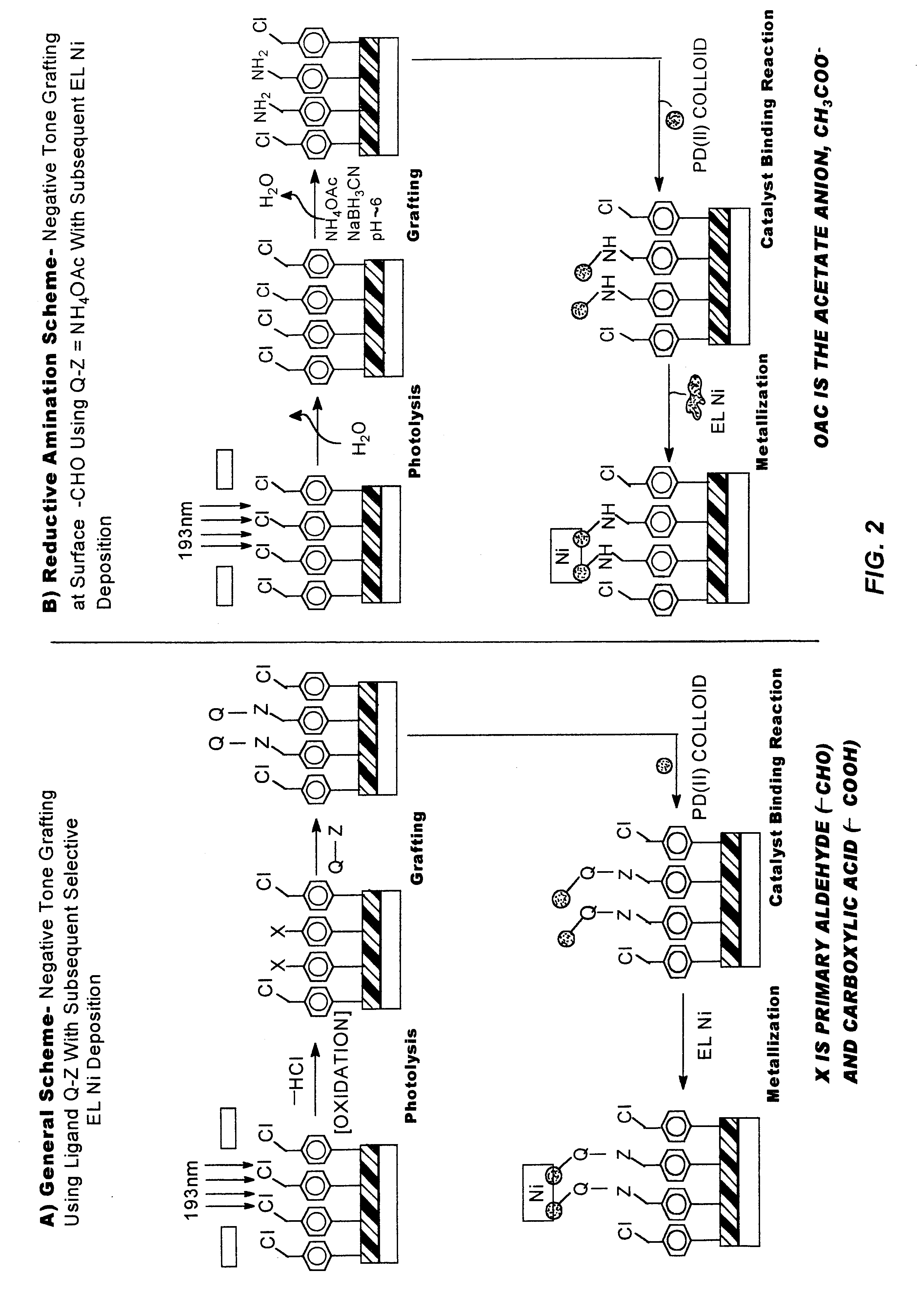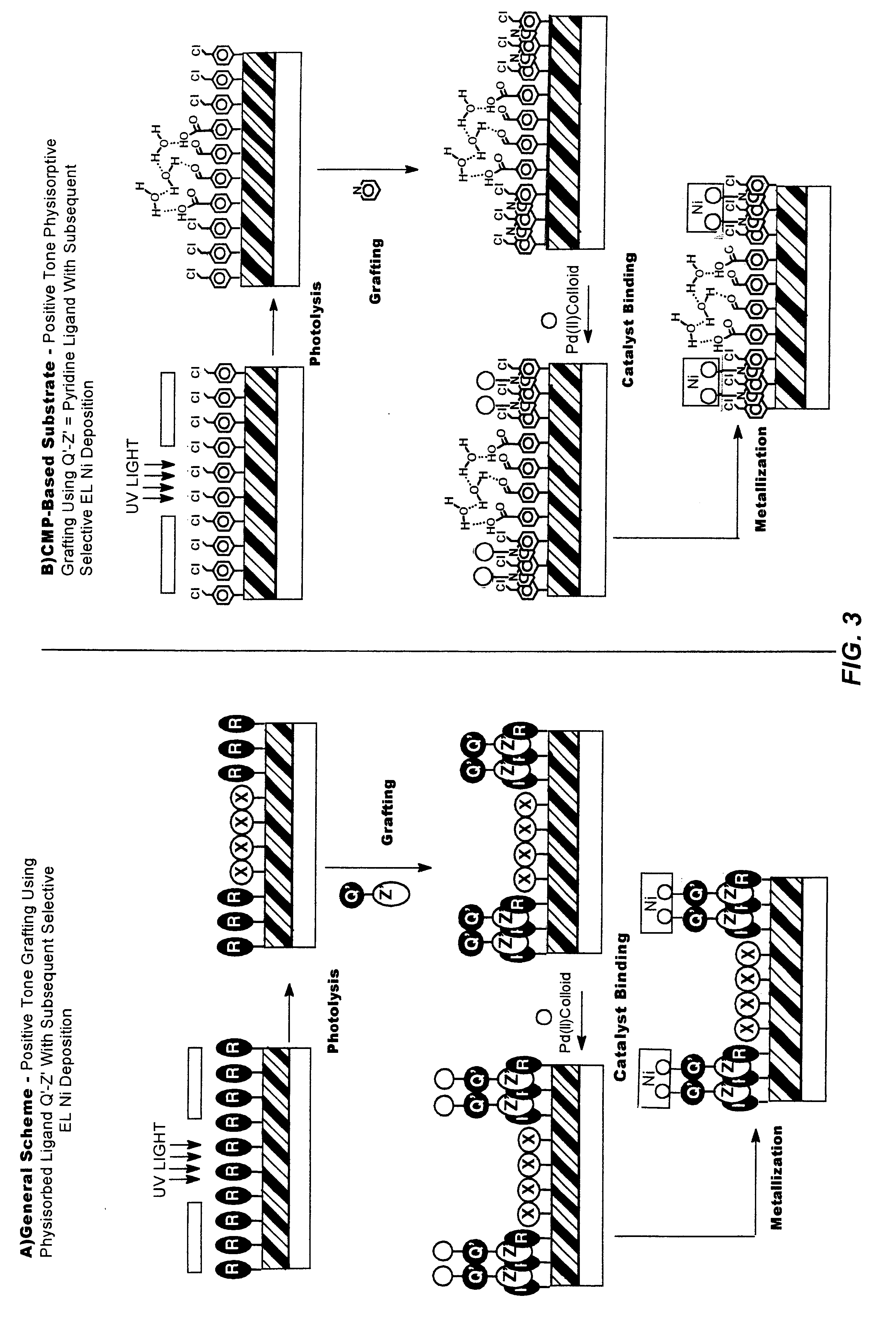Methods and materials for selective modification of photopatterned polymer films
a polymer film and selective modification technology, applied in the field of selective modification of photopatterned polymer films, can solve the problems of significant alteration of physical properties such as size (dimensions) and polarization of molecules, stray covalent binding, and unaltered functional groups remaining in the exposed portion of the templa
- Summary
- Abstract
- Description
- Claims
- Application Information
AI Technical Summary
Benefits of technology
Problems solved by technology
Method used
Image
Examples
example 1
Surface Functionalization with 4-chloromethyphenyltrichloro-silane
For the Formation of Polysiloxane Films with Controlled Thickness
This example illustrates the concept of building a polymer film containing photoreactive chloromethylphenyl functions to a controlled thickness on a substrate surface by reaction of a polymerizable monomer with reactive functional groups present at the substrate surface. A monomer containing polymerizable Si--Cl groups is reacted with Si--OH groups present on fused silica and native oxide Si wafer substrate surfaces in this example. The rate of film growth depended on the treatment conditions (e.g., humidity, temperature, time, CMPTS solution concentration) The CMPTS-treated Si wafers and fused silica slides obtained were evaluated using contact angle goniometry, AFM, ellipsometry and UV-visible spectroscopy techniques.
For general references on organosilane film formation see the following books: B. Arkles, "Silane Coupling Chemistry", in Silicon Compoun...
example 2
Surface Functionalization with 4-chloromethyl-phenyl trimethoxysilane
For the Formation of Polysiloxane Films with Controlled Thickness
This example extends the concept illustrated in Example 1 to films prepared using reactive monomers containing the reactive Si--OR (R=alkyl) functional group. The Si--OR functional group is less reactive than the Si--Cl functional group, permitting better control of the film polymerization rate and film thickness.
A solution of 4-chloromethylphenyltrimethoxysilane (M-CMPTS) in toluene was prepared in a glove bag under Ar atmosphere by pipetting 6 mL of M-CMPTS into a 1000 mL flask containing 600 mL toluene. A 238 .mu.L aliquot of glacial acetic acid was added to the flask to catalyze the hydrolysis of the M-CMPTS Si--OCH.sub.3 bonds. The contents of the flask were mixed well and the flask was removed from the glove bag. Clean Si wafers and fused silica slides were removed from storage in the boiling water bath, dried as described in Example 1, and plac...
example 3
Surface Functionalization with PolyVinylBenzylChloride (PVBC) Polymer
This example demonstrates the fabrication of a polymer film containing photosensitive chloromethylphenyl groups at a controlled thickness on a substrate surface via spincoating a solution of a polymeric material directly onto the substrate surface.
A 1% w / v solution of PVBC was prepared by adding 1.00 g PVBC powder to a 100 mL volumetric flask containing approx. 60 mL toluene. After the PVBC had completely dissolved, the flask was diluted to the mark with toluene and mixed thoroughly by inversion. A 10% v / v solution of HMDS in acetone was prepared and sufficient solution was transferred to a Tupperware.TM. container such that the solution depth in the container measured about 0.25 inch. The container was capped to prevent evaporation of the solution. Clean Si wafers and fused silica slides were removed from storage in the boiling water bath and dried as described in Example 1. The substrate surfaces exhibited measur...
PUM
| Property | Measurement | Unit |
|---|---|---|
| diameter | aaaaa | aaaaa |
| wavelengths | aaaaa | aaaaa |
| wavelengths | aaaaa | aaaaa |
Abstract
Description
Claims
Application Information
 Login to View More
Login to View More - R&D
- Intellectual Property
- Life Sciences
- Materials
- Tech Scout
- Unparalleled Data Quality
- Higher Quality Content
- 60% Fewer Hallucinations
Browse by: Latest US Patents, China's latest patents, Technical Efficacy Thesaurus, Application Domain, Technology Topic, Popular Technical Reports.
© 2025 PatSnap. All rights reserved.Legal|Privacy policy|Modern Slavery Act Transparency Statement|Sitemap|About US| Contact US: help@patsnap.com



